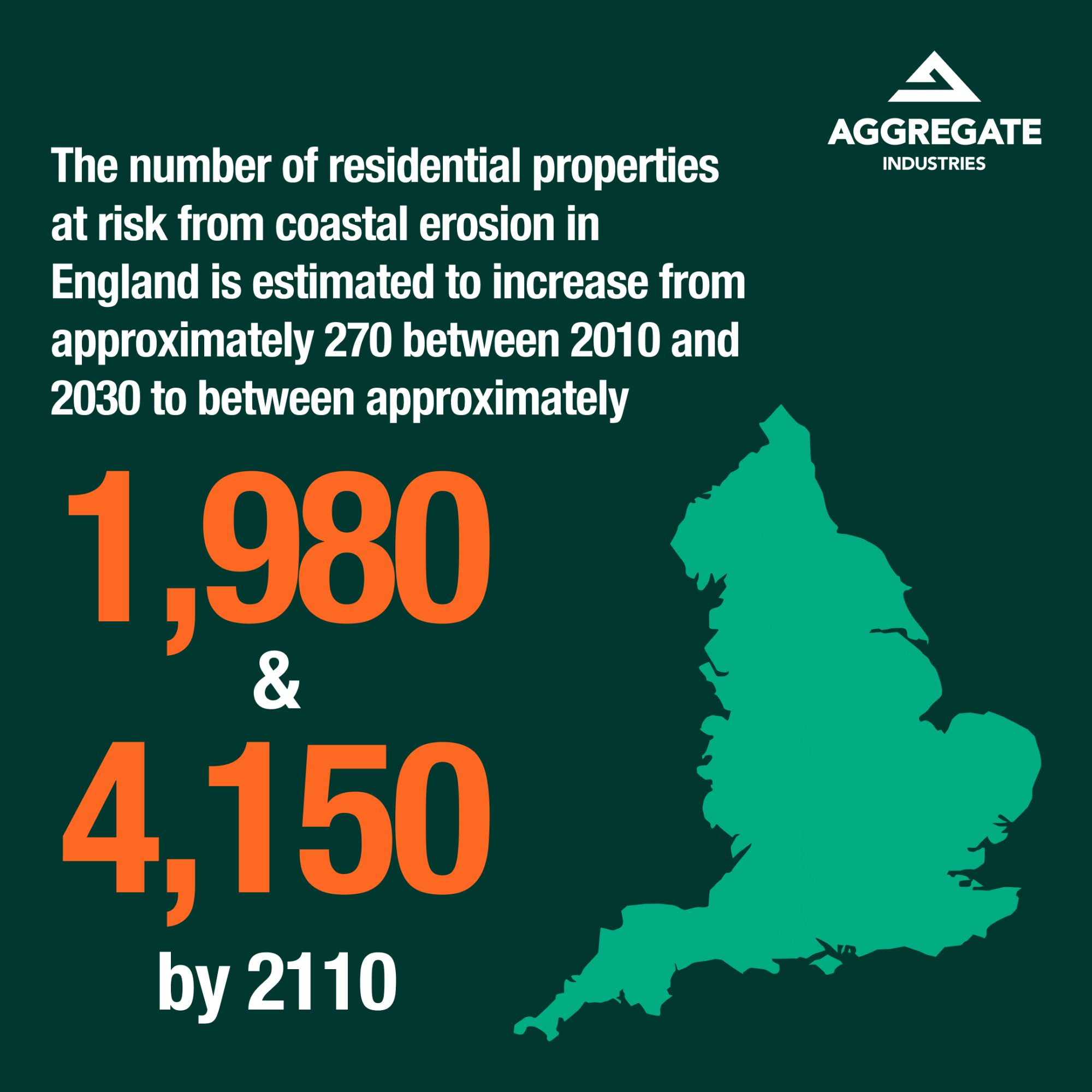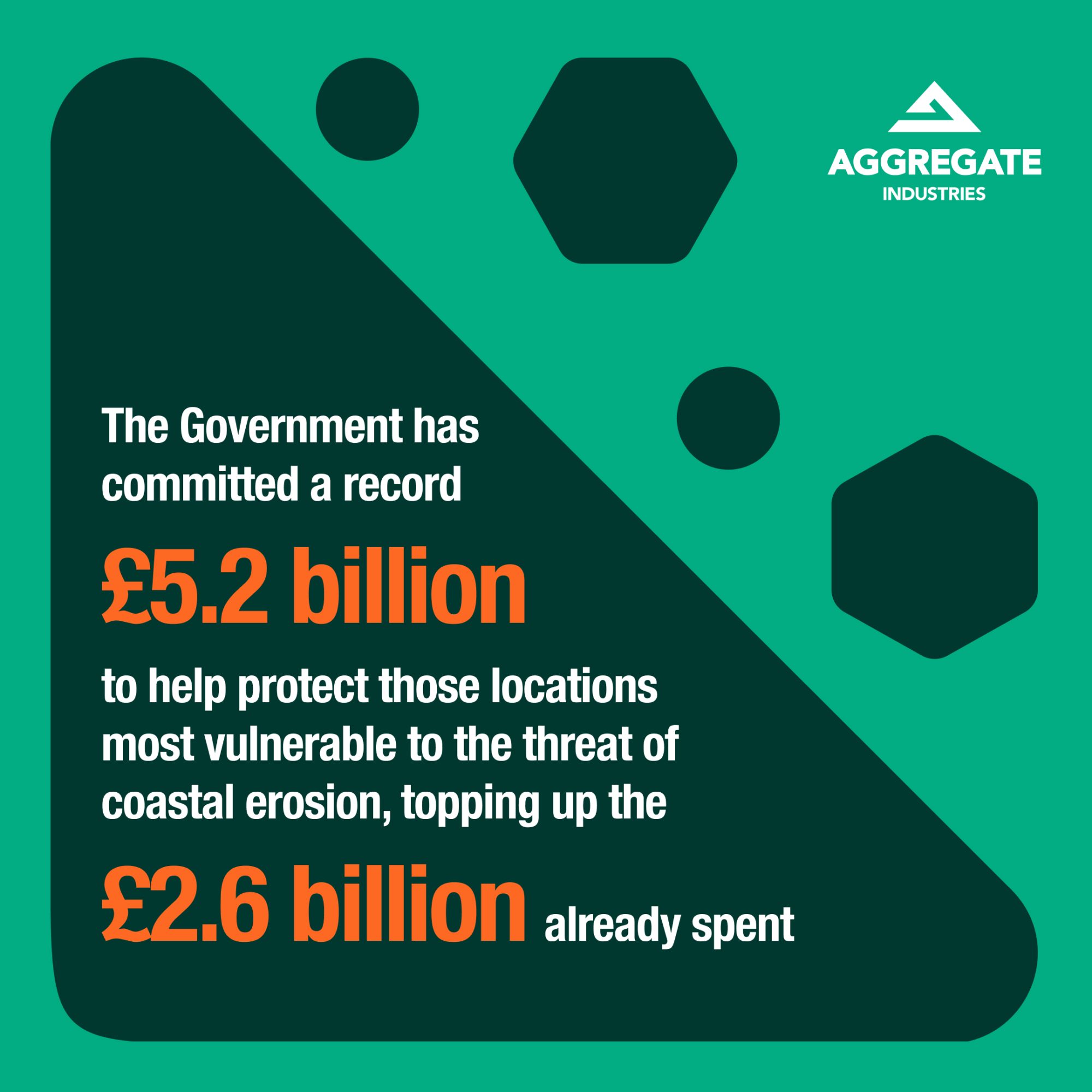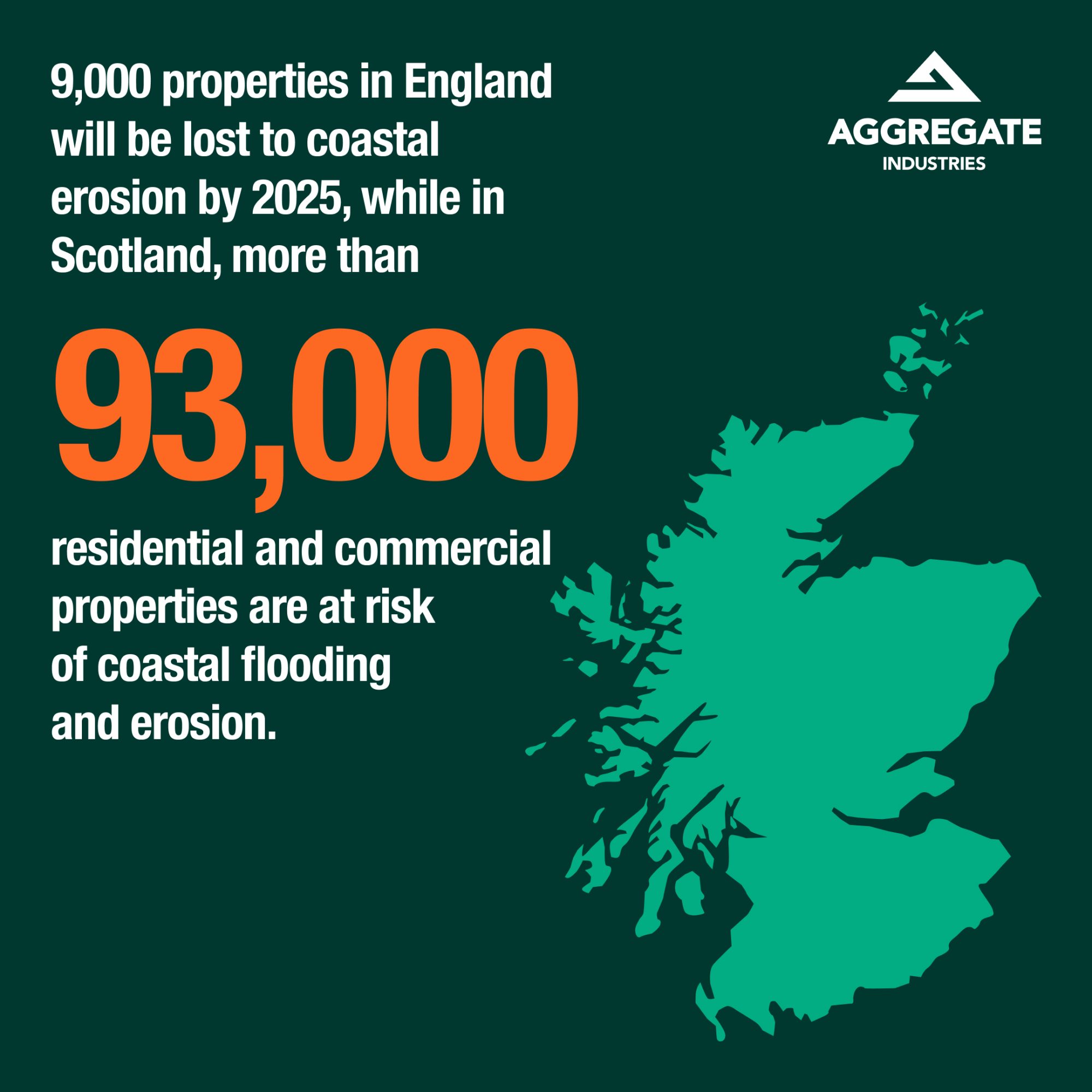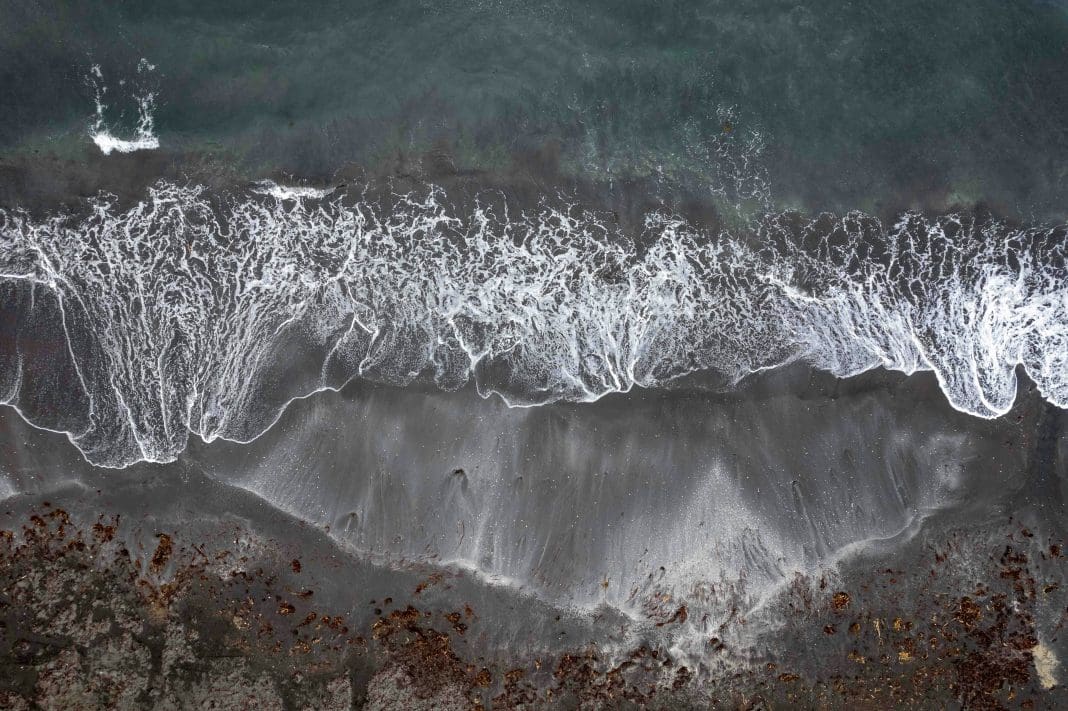A new report conducted by Aggregate Industries has laid bare the true cost and impact that coastal erosion is going to have on the UK. Aggregates Division managing director Lee Sleight examines the findings
As we are becoming increasingly aware of, coastal erosion is a significant environmental challenge that demands immediate attention and action. The UK’s varied geological formations, coupled with historical erosion trends, make this threat both unique and pressing.
The implications of coastal erosion are far-reaching, affecting geological stability, sociodemographic dynamics, economic stability, property values, leisure and tourism industries, infrastructure and heritage sites.
The economic value of coastal areas, including their role in tourism, agriculture and fisheries, is at risk. Previously, it had been estimated that coastal erosion would cost the UK economy £12bn. Following this research, we put this number much higher.
The threat of coastal erosion is not only reshaping the physical landscape but also impacting the socioeconomic fabric of coastal communities. Key statistics that highlight the magnitude of this challenge include:
- 1,600km of major roads, 650km of railway line, 92 railway stations, and 55 historic landfill sites at risk.
- 1.35m properties, worth an estimated £584m, at potential risk from inundation by 2100.
- Approximately 9,000 properties in England and over 93,000 residential and commercial properties in Scotland at risk of coastal erosion by 2025.
- 550 hectares of higher-quality agricultural land projected to be at risk from coastal erosion by 2100.
The future of coastal management in the UK is laden with challenges, but it also presents opportunities. The increasing threat of climate change necessitates innovative, flexible and integrated approaches to coastal management.
What solutions are available?
Right now, there is an array of sea and flood defence aggregate solutions that are well-suited to combat the evolving requirements in a world where rising sea levels are an increasing concern.
Just using Aggregate Industries as an example, we have used solutions like Rip Rap rock armour to reinforce a river bend in Cumbria and have made a significant impact.

The movement of shingle by waves and wind is the primary cause of erosion in unique landscapes, like in Dungeness, Kent. This erosion not only impacts rare plant species and bird habitats but also poses risks to local infrastructure, including roads and properties.
Our emergency supply of 14,500 tonnes of armourstone to help boost sea defences at Minehead in Somerset is a testament to our commitment to safeguarding coastal areas from potential flooding.
Erosion mitigation and adaptation strategies
The UK’s approach to managing coastal erosion involves a combination of mitigation and adaptation strategies. These strategies range from hard engineering solutions to softer, more sustainable approaches, each tailored to the specific needs of the affected areas.
Hard engineering solutions:
Beach nourishment: Beach nourishment involves adding large quantities of sand or gravel to eroding beaches. This method replenishes beach material lost to erosion, acting as a buffer against wave action.
Seawalls, revetments, groynes and breakwaters: These structures are designed to absorb or deflect wave energy, protecting the coastline behind them. Seawalls and revetments provide a barrier against wave action, while groynes and breakwaters interrupt wave patterns and reduce erosion.
Relocation of buildings and infrastructure: In areas where erosion poses a significant threat, the strategic relocation of buildings and infrastructure away from vulnerable areas is considered. This approach, often referred to as ‘managed retreat’, is seen as a sustainable long-term solution to the challenges posed by an eroding coastline.
Soft engineering and natural solutions:
Planting native vegetation and dune construction: Stabilising the soil and sand through the planting of native vegetation and the construction of dunes provides a natural barrier against erosion.
Breakwater islands: Constructed offshore, breakwater islands reduce the intensity of wave action reaching the shore. These structures can be effective in protecting coastlines, especially in combination with other erosion control measures.
Coastal monitoring and early warning systems: Advanced monitoring systems are crucial for tracking erosion patterns and providing early warnings for at-risk areas. The significance of these systems is evident considering the steepening occurring at 61% of coastal locations in England and Wales.

This isn’t a problem that will get better on its own. The time for action is now
Climate change significantly impacts coastal erosion in the UK. It is estimated that approximately 58% of coastal erosion, sea level rise and storm surges can be attributed to climate change.
Predictions of sea level rise, potentially reaching up to one metre by 2100, pose a significant threat to the UK’s coastline.
This rise in sea level is expected to exacerbate coastal erosion, increasing the frequency and severity of coastal flooding and leading to more pronounced changes in the coastal landscape.

Coastal Vulnerability Assessments (CVA) are essential for understanding and managing the risks associated with coastal erosion and sea level rise. They incorporate a range of methodologies to assess the susceptibility of coastlines to various natural and human-induced factors, including geological, geomorphological, sociodemographic and economic factors.
By understanding these complex challenges, we can develop tailored solutions to protect our coastlines and communities.
The future of coastal management in the UK requires robust, adaptive policies that consider the long-term impacts of coastal erosion. Investment in sustainable coastal defence measures and support for affected communities is crucial.
Policymakers must prioritise the integration of coastal erosion risks into land use planning and infrastructure development.
Local communities should be actively involved in coastal management strategies via awareness programmes and community-led initiatives that can foster resilience and adaptive capacity.
The time to act is now, before it is too late. Following the launch of this report, we’re urging all stakeholders, from government bodies to local communities, to come together and prioritise the protection of our coastlines, infrastructure, heritage sites and the wellbeing of our coastal residents.
It is crucial to invest in sustainable coastal management practices, implement effective adaptation strategies and allocate the necessary resources to mitigate the impact of coastal erosion.
Lee Sleight
Managing director, Aggregates Division
Aggregate Industries














